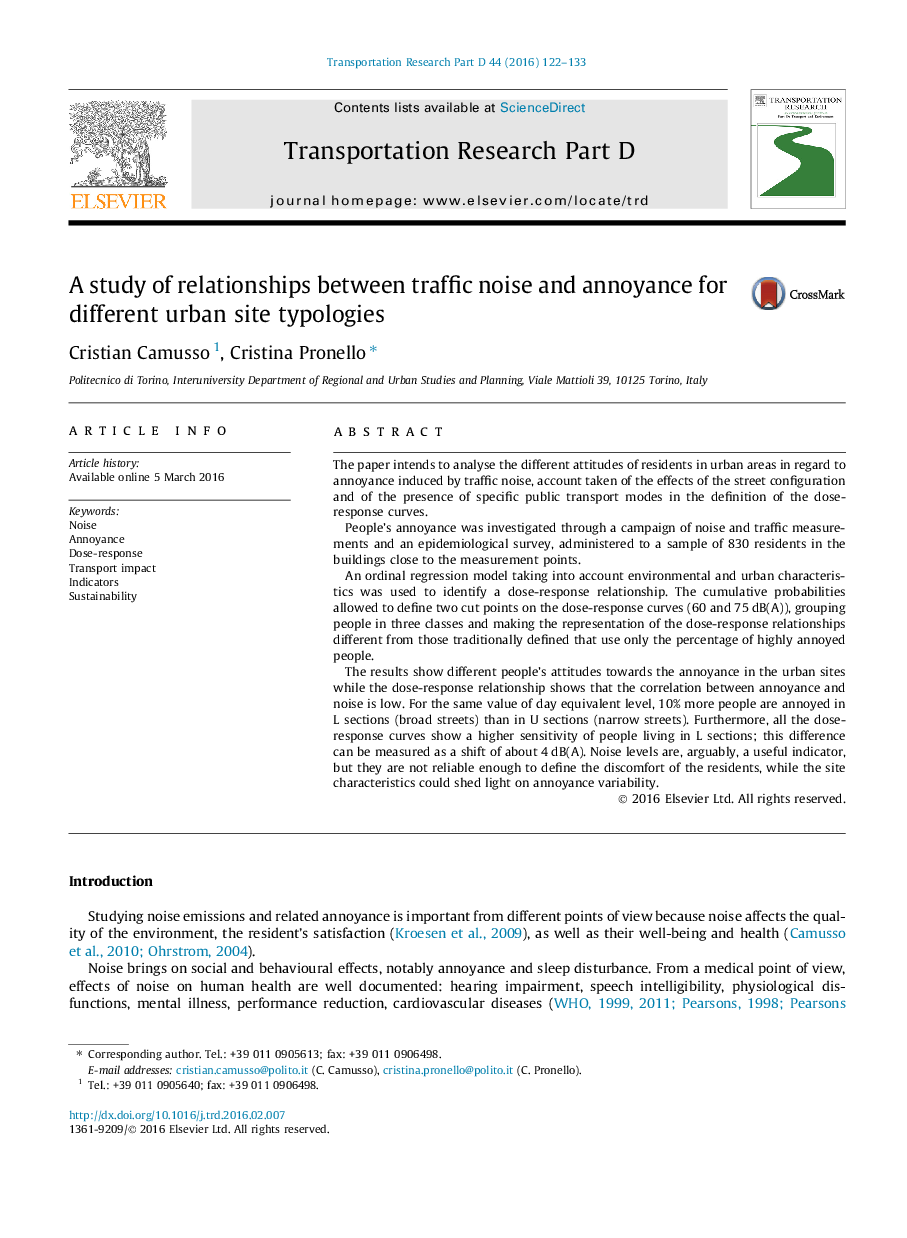| کد مقاله | کد نشریه | سال انتشار | مقاله انگلیسی | نسخه تمام متن |
|---|---|---|---|---|
| 1065650 | 1485879 | 2016 | 12 صفحه PDF | دانلود رایگان |
• Modelling annoyance through environmental and urban road characteristics.
• Use of street configuration in the definition of the dose–response curves.
• Definition of alternative dose–response curves to forecast annoyance.
• Unreliability of noise levels to define residents’ discomfort.
• Site characteristics and configuration as illustrative of annoyance variability.
The paper intends to analyse the different attitudes of residents in urban areas in regard to annoyance induced by traffic noise, account taken of the effects of the street configuration and of the presence of specific public transport modes in the definition of the dose-response curves.People’s annoyance was investigated through a campaign of noise and traffic measurements and an epidemiological survey, administered to a sample of 830 residents in the buildings close to the measurement points.An ordinal regression model taking into account environmental and urban characteristics was used to identify a dose-response relationship. The cumulative probabilities allowed to define two cut points on the dose-response curves (60 and 75 dB(A)), grouping people in three classes and making the representation of the dose-response relationships different from those traditionally defined that use only the percentage of highly annoyed people.The results show different people’s attitudes towards the annoyance in the urban sites while the dose-response relationship shows that the correlation between annoyance and noise is low. For the same value of day equivalent level, 10% more people are annoyed in L sections (broad streets) than in U sections (narrow streets). Furthermore, all the dose-response curves show a higher sensitivity of people living in L sections; this difference can be measured as a shift of about 4 dB(A). Noise levels are, arguably, a useful indicator, but they are not reliable enough to define the discomfort of the residents, while the site characteristics could shed light on annoyance variability.
Journal: Transportation Research Part D: Transport and Environment - Volume 44, May 2016, Pages 122–133
